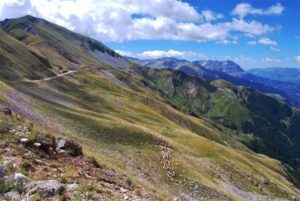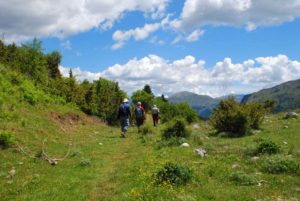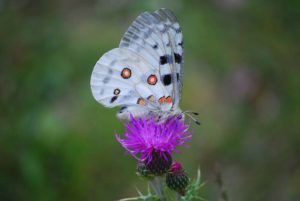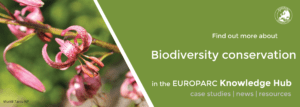Spreading knowledge about butterflies to protect habitats: a case study from Greece
Lycaena ottomanus recorded at Mount Lakmos. Photo: Bisa
Butterflies are good indicators of ecological condition. Based on their occurrence, it is possible to assess change and inform site managers for decision-making. All over Greece, butterfly diversity is very rich and the Tzoumerka National Park decided to make use of this asset to increase environmental awareness of the public and improve habitat protection.
Increasing environmental awareness

Alpine meadows are important habitats for butterfly species; Mount KATARAXIAS. Photo: BISA
The Tzoumerka Nartional Park is well aware of the fact that rich wildlife in combination with cultural features of the area are great preconditions to make it a thriving ecotourism destination. That is why they aim to obtain a complete list of butterfly species, identify the best sites to apply long term monitoring and protect their habitats.
The park hopes to attract butterfly-watchers and gain recognition as a butterfly destination. Moreover, they organise various activities to sensitise local communities about the importance of wildlife habitat conservation.
All over Greece, butterfly diversity is very rich and many protected and endemic species are recorded in various habitats.
Read the original case study on increasing knowledge about butterfly sites in Tzoumerka National Park, and another case study on monitoring snake populations.
In a nutshell, the project aims to:

Members of the team visiting new sites near Kakarditsa in 2016. Photo: BISA
- Obtain a complete species-list for butterflies in Tzoumerka NP.
- Identify important areas for the protection of rare/protected species as well as areas with high butterfly diversity.
- Protect important butterfly habitats from anthropogenic threats.
- Contribute to the conservation objectives of the Habitats Directive (Council Directive 92/43/EEC on the Conservation of natural habitats and of wild fauna and flora).
- Attract butterfly-watchers in the NP.
- Raise awareness about butterfly habitats protection in local communities.
Butterfly monitoring
The Park cooperated with a group of experts with long experience on butterflies monitoring. More specifically, the scientific staff of the Park conducted surveys with the help of Lazaros Pamperis, a Greek butterfly expert and members of the Butterfly Conservation – European Interest Group. Surveys were repeated for several years, progressively including more new sites. Finally, a special survey was conducted to monitor Parnassius apollo and Parnassius mnemosyne when their habitats were identified.

Parnassius apollo recorded at Mount Lakmos. Photo: Rika Bisa
The Park representatives held several meetings to inform local communities about the project. Shepherds were told to collect information about customs and practices related to the use of meadows, and experts in the tourist sector to collect information about visitors. The Park established a partnership with the Environmental Education Centre and organised educational activities to inform schoolchildren about biodiversity.
Once again we rediscovered the importance of sharing information with all the entities and involve experts and local stakeholders to implement conservation measures, protect species and habitats.
Results
Despite challenges such as lack of staff and equipment, which make the realisation of the goals more difficult, some results are already visible. Besides records of many of the winged beauties, important butterfly sites have been identified to apply monitoring projects. The Park established some new trails to enrich ecotourism in the area and began collaboration with local ecotourism agencies to improve its services. Moreover, the data collected helped to prevent habitat deterioration.
Do you have a story of protected area management around Europe that you would like to share as a case study? We will be happy to read it and promote it on our website! Submit your case study here.
